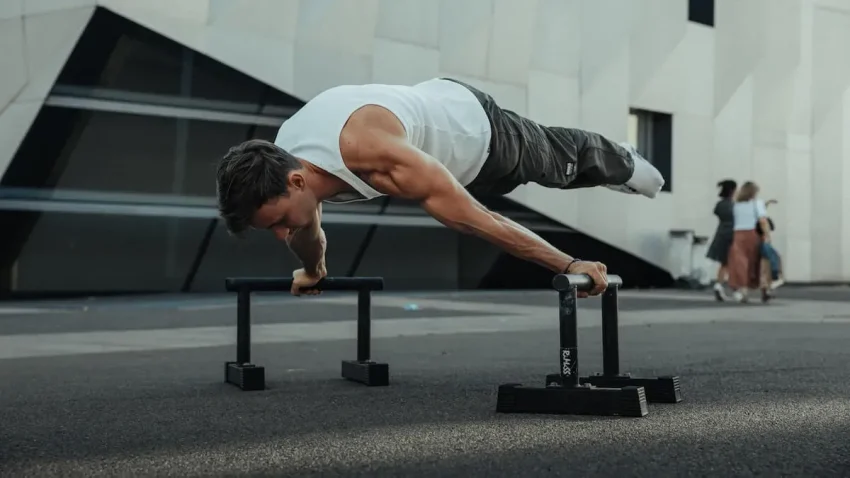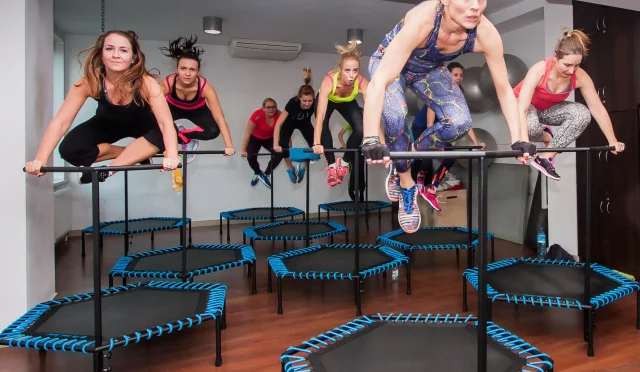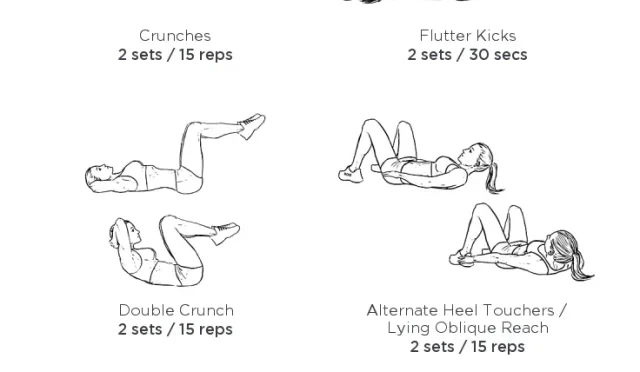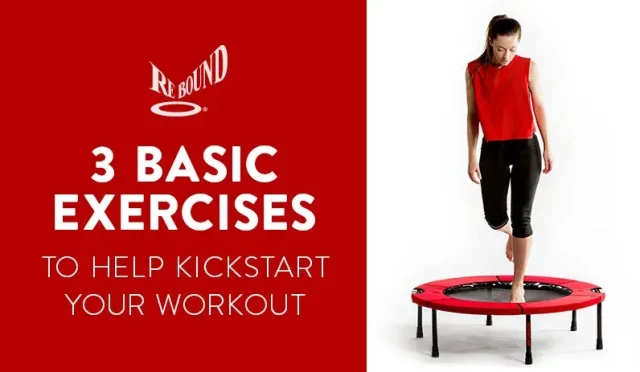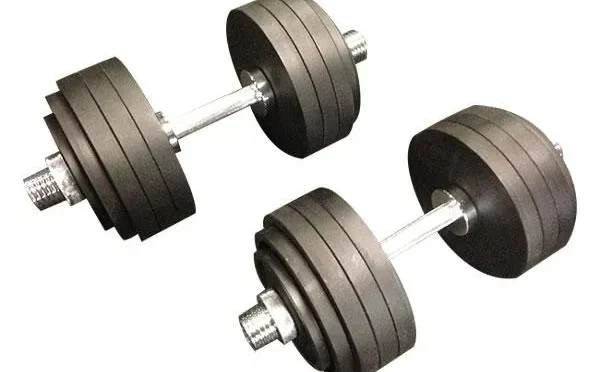Calisthenics: The Raw Truth Behind Bodyweight Training
Calisthenics, the art of bodyweight training, is rapidly becoming a global phenomenon, captivating fitness enthusiasts across diverse platforms and settings. With its roots steeped in ancient practices, this form of movement encompasses powerful exercises that rely solely on one’s physical strength and discipline. From freestyle calisthenics, which pushes the boundaries of creativity and skill, to the gritty history of prison workouts, calisthenics embodies resilience and adaptability. No longer confined to niche circles, its simplicity and effectiveness have turned it into a mainstream workout choice for those embracing a healthy lifestyle. By focusing on human movement, calisthenics not only builds strength but also fosters a profound sense of freedom in how we approach fitness.
Bodyweight training, often referred to as calisthenics, has evolved into a powerful movement in the fitness community, emphasizing natural human strength and agility. This compelling approach to physical fitness draws from historical practices and is often associated with various terms such as prison workout, which highlights its development in challenging environments. Movements practiced in freestyle calisthenics demonstrate incredible creativity and athleticism, appealing to those looking for a fresh alternative to traditional gym routines. The essence of this training lies in its accessibility; anyone can begin their journey with just their body and the determination to explore the limits of human movement. As we delve into the world of calisthenics, we discover a rich tapestry of history, creativity, and the promise of personal transformation.
Understanding Calisthenics: A Brief Overview
Calisthenics is more than just a fitness regime; it’s a philosophy centered around bodyweight training that combines strength, flexibility, and endurance. This method emphasizes the use of one’s own body to build physical strength, aligning seamlessly with ancient practices that date back to the Greeks. Historically, calisthenics served as an essential preparation for warriors and athletes, showcasing its roots in human movement. Simply put, if you can move your body, you can perform calisthenics. This allows enthusiasts to train anywhere—whether in a park, at home, or even on a beach—making it an accessible and appealing option for individuals of all fitness levels.
In recent years, calisthenics has surged in popularity thanks to social media, which has allowed for the sharing of impressive routines and techniques. As more people become aware of the potential benefits of bodyweight training, the community has grown exponentially, inspiring others to try these workouts. The versatility of calisthenics appeals to individuals looking to improve not only their physical capacity but also their mental resilience, as discipline and control are critical components of this training style.
The Historical Significance of Calisthenics
Understanding the history of calisthenics is crucial to recognizing its significance in modern fitness culture. Originating from the ancient Greeks, calisthenics was initially developed to enhance military strength and physical prowess. The Greeks viewed physical fitness as a form of beauty and strength, with celebrated figures like athletes and soldiers embodying this ideal through rigorous bodyweight training. Over the centuries, calisthenics has transcended its origins, reminding us that strength does not rely solely on equipment but on the very vessel we inhabit.
Moreover, this training form has been adopted in various cultures and environments, from military training to prison workouts, where it became an essential means of survival and personal autonomy. These historical examples showcase calisthenics not merely as a workout but as a means of asserting control over one’s body and circumstances, reflecting its deep-seated significance in human history and movement.
Calisthenics in the Modern Age
Today, calisthenics is experiencing a renaissance, evolving from a training method used in confinement or under extremities to a celebrated fitness trend embraced by millions globally. Social media platforms, including Instagram and YouTube, have played a pivotal role in propelling the visibility and accessibility of bodyweight training. Influencers and practitioners share tutorials, challenges, and impressive feats like human flags or muscle-ups, contributing to a vibrant community that transcends geographical boundaries.
Additionally, the modern calisthenics movement emphasizes individual creativity and expression through freestyle routines. This innovative approach encourages practitioners to combine elements of dance, acrobatics, and gymnastics, highlighting the artistry inherent in movement. By fostering a sense of community and accessibility, calisthenics invites individuals from all walks of life to engage with their bodies in meaningful ways.
The Prison Workout Phenomenon
The evolution of calisthenics is profoundly influenced by its adoption in harsh environments, particularly within prison systems. As inmates sought ways to maintain physical fitness without access to traditional gym equipment, a unique form of bodyweight training emerged that focused on functional strength. Exercises like pull-ups, push-ups, and dips became staples, not merely for building muscle but for regaining a sense of control and identity in a constrictive environment.
Books such as *Convict Conditioning* illuminate this underground culture, detailing how individuals transformed adversity into strength. These prison workouts stripped down the notion of fitness to its core, fostering resilience and tenacity through rigorous, no-frills calisthenics. The stark contrast of training in confined spaces, combined with the aspiration for freedom, has played a significant role in shaping the modern calisthenics movement we recognize today.
Freestyle Calisthenics: The Artistic Expression of Strength
Freestyle calisthenics has emerged as a captivating sub-genre within this training method, blending athletic prowess with artistic expression. Originating in urban settings, freestyle routines showcase the creative potential of bodyweight training, as practitioners perform tricks and routines that defy gravity. This aspect not only emphasizes individual skill but also promotes community and camaraderie among practitioners who stand in awe of each other’s capabilities.
By combining elements of parkour, dance, and gymnastics, freestyle calisthenics transcends conventional workouts, inviting practitioners to explore their limits and express themselves freely. This fusion has played a crucial role in attracting a younger demographic to calisthenics, making it a vibrant part of street culture and urban fitness, celebrated for its creativity and inclusivity.
The Psychological Benefits of Calisthenics
Engaging in calisthenics offers numerous psychological benefits, including enhanced mental resilience and improved body awareness. As practitioners work to master complex movements and progress through various exercises, they cultivate a growth mindset that translates to other aspects of their lives. The discipline required to perform bodyweight exercises encourages a sense of accomplishment that boosts self-esteem and confidence.
Moreover, calisthenics fosters mindfulness by focusing on body control, engagement, and movement quality. Each rep becomes a moment of awareness, promoting a stronger mind-body connection that enhances overall well-being. For many, this is more than a fitness regimen; it’s a transformative practice that emphasizes personal growth and self-discovery.
Accessibility and Community in Calisthenics
One of the greatest strengths of calisthenics lies in its accessibility. Unlike traditional gym memberships and complex equipment, this form of training requires little more than your body and a dedicated mindset. It encourages individuals to find their own space—be it a local park, backyard, or even indoors—to practice and hone their skills. This democratization of fitness has opened doors for countless people who may feel intimidated by conventional gym culture.
In addition to being accessible, calisthenics thrives on community engagement. Social media has revolutionized how practitioners connect, share tips, and motivate each other. Local meetups, online challenges, and collaborative training sessions foster a sense of belonging among individuals united by their passion for bodyweight training. This community spirit enhances both the social and motivational aspects of fitness, making the journey collectively enriching.
Calisthenics: A Lifelong Journey
Calisthenics invites individuals to embark on a lifelong journey towards self-improvement and mastery of their own bodies. The focus on gradual progression mirrors life itself, where the path to goals often involves patience, perseverance, and setbacks. Each small victory—whether nailing a handstand or completing a set of challenging push-ups—serves as a reminder that growth is a continuous process that requires dedication and consistency.
Additionally, the ability to continually set new challenges maintains the excitement and engagement of bodyweight training. There is always a new skill to learn or a new variation to master, which keeps boredom at bay and encourages lifelong participation. This journey of calisthenics transcends physical fitness, evolving into a holistic lifestyle focused on personal growth, resilience, and freedom.
The Future of Calisthenics Training
As we look ahead, the future of calisthenics training seems bright and full of potential. With the continual rise in popularity of bodyweight exercises, we can expect to see more inclusive and diverse training environments where individuals of all backgrounds can connect and train together. Innovations in equipment designed specifically for calisthenics will also enhance accessibility, allowing even more people to explore this empowering form of movement.
Moreover, as awareness around mental wellness and fitness continues to grow, calisthenics is likely to be recognized not just as a physical workout, but as a vehicle for holistic well-being. By championing community, accessibility, and personal growth, calisthenics will establish itself as a mainstay in the fitness landscape, resonating with those seeking genuine strength and freedom in their journey toward health.
Frequently Asked Questions
What is calisthenics and how does it relate to bodyweight training?
Calisthenics is a form of bodyweight training that utilizes an individual’s own weight to build strength, flexibility, and endurance. It includes exercises such as push-ups, pull-ups, dips, and squats, focusing on functional movement and control without the need for external equipment.
How did freestyle calisthenics originate and what is its significance?
Freestyle calisthenics emerged in the early 2000s when street athletes in New York began showcasing their skills on playgrounds. This form of training gained popularity for its creative expressions of movement and strength, highlighting the artistic aspect of bodyweight training and inspiring numerous fitness enthusiasts worldwide.
What are the historical roots of calisthenics and its impact on human movement?
The history of calisthenics dates back to ancient Greece, where it was used for preparing warriors and athletes by enhancing strength and promoting a balanced physique. This long-standing tradition emphasizes the importance of natural human movement patterns, showcasing how fundamental exercises contribute to overall fitness and athletic performance.
Can calisthenics be effectively practiced in prison environments?
Yes, calisthenics became a prominent form of training in prison environments where individuals used their bodies to perform exercises like push-ups and pull-ups in the absence of equipment. This form of bodyweight training not only builds physical strength but also fosters discipline and mental resilience in harsh conditions.
Is calisthenics suitable for beginners and how can it be incorporated into a fitness regimen?
Absolutely, calisthenics is suitable for beginners as it can be modified to fit various fitness levels. Individuals can start with basic movements, gradually advancing to more complex exercises as strength and confidence develop. Incorporating calisthenics into a fitness regimen can enhance overall body control and functional strength.
What are the core benefits of practicing calisthenics compared to traditional gym workouts?
The core benefits of calisthenics include its accessibility, as it requires minimal equipment and can be performed anywhere. It also promotes functional strength, enhances body awareness, and fosters a deeper connection between mind and body, unlike traditional gym workouts that often rely on machines and heavy weights.
How does calisthenics promote freedom in fitness training?
Calisthenics promotes freedom in fitness training by allowing individuals to exercise anywhere without reliance on machines or a gym. This flexibility encourages creativity and self-expression in movement, aligning with the core values of autonomy and personal growth that are central to bodyweight training.
What mindset is essential for success in calisthenics training?
A successful mindset for calisthenics training includes patience, persistence, and a willingness to embrace challenges. This training is about gradual progression, self-ownership, and dedication, encouraging practitioners to focus on personal growth rather than immediate results.
What advancements have occurred in calisthenics equipment design?
Advancements in calisthenics equipment design focus on enhancing training experiences without requiring traditional gym setups. Innovations like portable parallettes, adjustable dip bars, and weighted vests provide versatility and support for learning bodyweight skills while promoting effective, functional training.
How can one track progress in calisthenics training?
Progress in calisthenics can be tracked by mastering specific exercises, increasing repetitions, or advancing to more challenging variations. Keeping a workout journal and setting specific goals for skills such as handstands or muscle-ups can provide clear benchmarks and motivation along the journey.
| Key Points | Description |
|---|---|
| Definition | Calisthenics is a form of bodyweight training that emphasizes movement, strength, and freedom. |
| Origins | The term originates from Greek words meaning beauty and strength, practiced by ancient Greeks to prepare for battle. |
| Evolution | Developed in prison yards where inmates used bodyweight exercises for discipline and survival. |
| Resurgence | In the 2000s, calisthenics gained popularity through street workouts and social media, making it accessible to all. |
| Focus | Calisthenics emphasizes control of the body and personal progression rather than aesthetics. |
| Accessibility | Requires no expensive equipment; you can train anywhere with just your body. |
| Philosophy | Promotes ownership of one’s fitness journey and emphasizes genuine progress over trends. |
Summary
Calisthenics is a powerful fitness method that transcends mere trends, offering individuals a way to achieve strength and control through bodyweight training. This discipline has origins rooted in survival and rebellion, making it more than just a workout—it’s a movement for freedom. The simplicity and accessibility of calisthenics allow anyone to engage and challenge themselves, regardless of their environment. As calisthenics continues to grow in popularity, it serves not only as a form of physical exercise but also as a holistic approach to personal empowerment and resilience.
#Calisthenics #BodyweightTraining #FunctionalStrength #StreetWorkout #FitnessTruth

